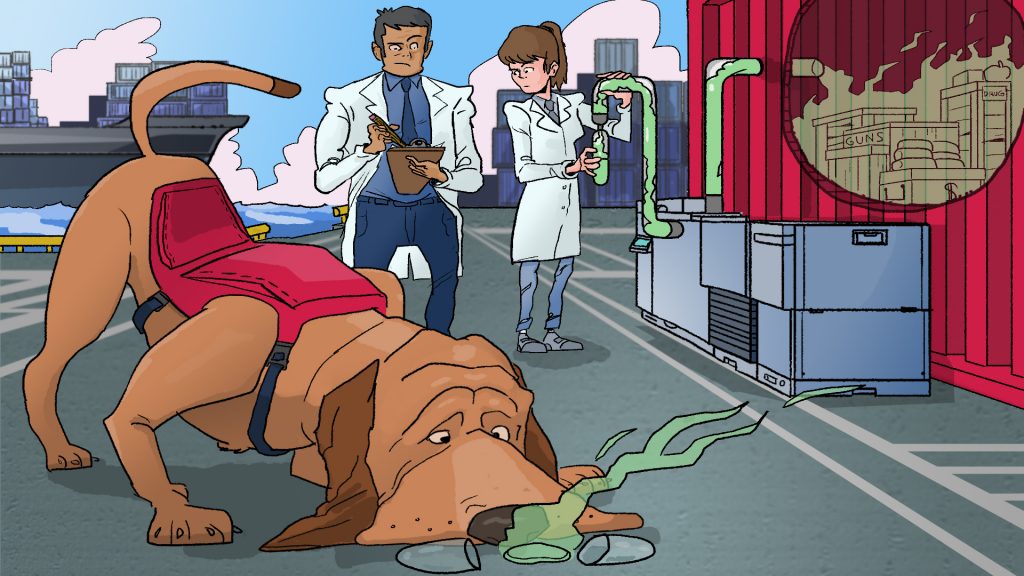Sniff test: Detecting contraband without opening containers

Shipping containers crisscrossing the world and stopping at ports and borders to enter the United States for transport across the nation may soon have to pass the “sniff” test.
Specially trained dogs are at the center of a new project by the Cross-Border Threat Screening and Supply Chain Defense, CBTS, Center of Excellence, working in conjunction with the Center for Conservation Biology and their Conservation Canines program at the University of Washington.
Greg Pompelli, director of the Texas A&M AgriLife-led CBTS, said the problem today is that transnational criminal organizations are capitalizing on the difficulty and expense of detecting containerized contraband once in transit, due to huge increases in the volume of containers shipped worldwide and pressure to keep commerce moving.
This past year, Pompelli said CBTS funded a range of projects, including a two-year project designed by Sam Wasser, director of the Center for Conservation Biology at the University of Washington, to develop a low-cost method using dogs to detect contraband in shipping containers, without breaking customs seals. The dogs are trained to detect the contraband scent in air samples vacuumed from shipping containers.
If successful, this method will allow agents to search containers for contraband ranging from ivory to drugs to timber with minimal disruption to port operations and provide criminal investigators with another tool to fight illegal imports, Pompelli said.
“Right now, detection programs require the containers to be open to determine if they include contraband,” Pompelli said. “But this project allows an operator to draw an air sample from a container and bring it back to the dog to determine if there is something of concern.”
Heather Manley Lillibridge, CBTS executive director, said the project will soon be entering its second year. Researchers are in the process of testing the accuracy and sensitivity of the dogs in detection rates on various types of contraband. They started with smaller containers, and are working to scale up to samples from shipping containers.
“We have to determine not only if the dogs are effective, but how can they be generally used or specifically used and what can be accomplished,” Pompelli said. “We know there are a lot of canine units out there already. We know the process has to be credible – if you open the container and there is illegal contraband, that there was probable cause for a legal case that will be built.”
Pompelli said a key part of the research project is developing an apparatus that draws air from the outside vents at the top of each shipping container, through a canister containing an inexpensive odor-collection material that captures the contraband scent.
Manley Lillibridge said in an effort to increase the efficiency of their sampling devise, Wasser’s team began collaborating with Igor Novosselov, a University of Washington aerosol scientist in the Department of Mechanical Engineering who is being funded by another DHS Center of Excellence – Awareness and Localization of Explosives-Related Threats, ALERT.
The new device mimics how a dog smells by stirring the air and uses a vacuum strong enough to survey a larger cargo container. They are using gas chromatography-mass spectrometry to determine how long to draw air from the container based on the signal strength captured by the apparatus over time. A pilot demonstration will be conducted in the Port of Seattle towards the end of the second year.

